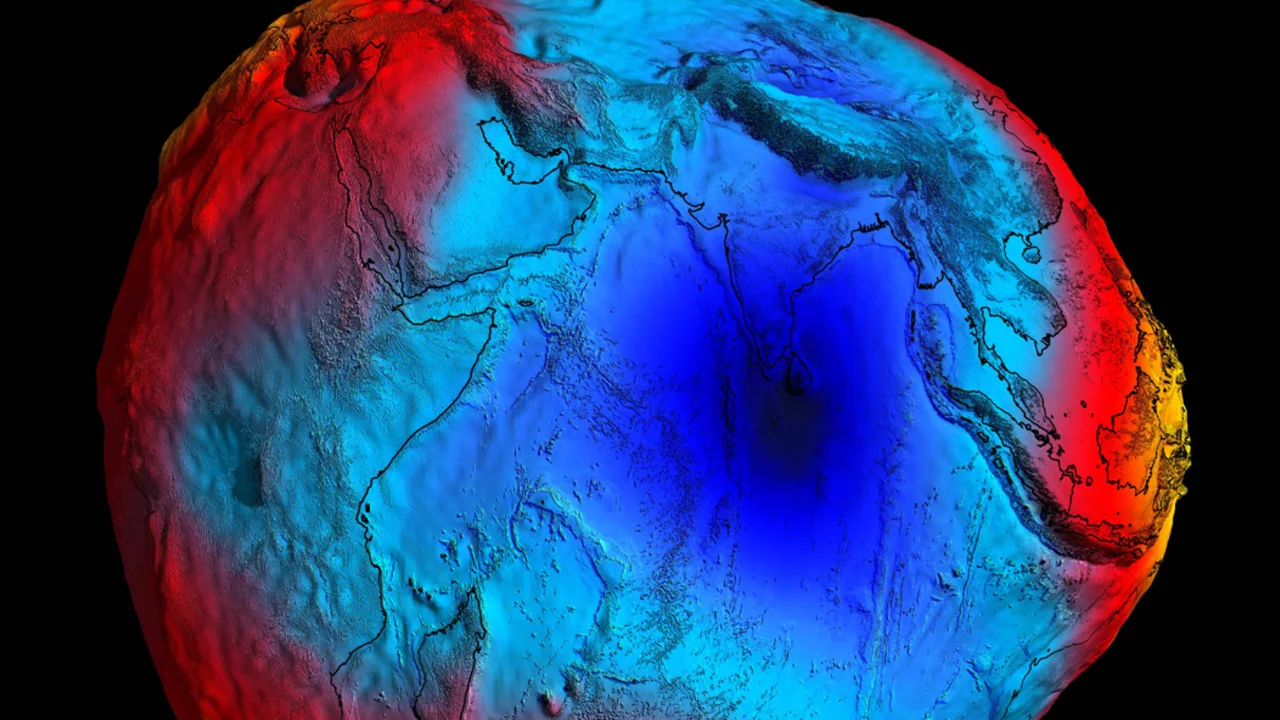There is a ‘gravity hole’ in the Indian Ocean and scientists found out why
25th Jul 2023
Scientists from the Indian Institute of Science in Bengaluru, India, may have finally unlocked the mystery behind the enigmatic “gravity hole” in the Indian Ocean, where Earth’s gravitational pull is weaker, and sea levels dip by over 328 feet (100 meters). Their groundbreaking findings, recently published in the journal Geophysical Research Letters, suggest that plumes of magma from the Earth’s deep interior could be the key to this peculiar phenomenon, similar to those that give rise to volcanic activity.
140 million years ago…
The Earth, it turns out, is far from being a perfect sphere but rather an ellipsoid with uneven density and properties. These variations in density affect Earth’s surface and its gravity, resulting in geoid anomalies. The “gravity hole,” officially known as the Indian Ocean geoid low, stands out as the most significant gravitational anomaly, forming a circular depression spanning about 1.2 million square miles (3 million square kilometres) off India’s southern tip. First discovered in 1948 during a gravity survey, the gravity hole has remained an enigma for decades.
To shed light on its origin, the researchers employed sophisticated supercomputers to simulate the geological evolution of the region dating back 140 million years. They focused on a time when an ancient ocean existed, but which no longer remains today. By running 19 simulations up to the present day, the team observed that in six of these scenarios, a geoid low resembling the Indian Ocean’s gravity hole emerged.
The critical factor in these models was the presence of magma plumes around the geoid low, interacting with the mantle, the Earth’s interior layer between the core and crust. These plumes, formed when India’s landmass drifted and eventually collided with Asia millions of years ago, resulted from the oceanic plate descending into the mantle. As low-density material approached the Earth’s surface, it contributed to the creation of the gravity anomaly.
According to the team’s calculations, the geoid low formed approximately 20 million years ago. Whether it will persist or eventually vanish depends on the movements of mass anomalies within the Earth, which remains uncertain over geological time scales. Some experts believe it could endure for hundreds of millions of years, while others suggest it might eventually dissipate.
The research has garnered significant interest from the scientific community, with experts hailing the study’s innovative approach and intriguing hypotheses. Some point out that further research is needed, particularly regarding the absence of a powerful mantle dynamic plume, which could have caused significant volcanic activity in the past, and discrepancies between predicted and observed geoid shapes.
The study’s lead researcher, Attreyee Ghosh, acknowledges that absolute precision in modelling the Earth’s past remains challenging, but she believes the overall explanation for the Indian Ocean’s gravity hole is compelling. As the scientific community continues to delve deeper into this captivating mystery, the secrets of the gravity hole may finally be within reach.






Thank you for your comment! It will be visible on the site after moderation.